EDITORS NOTE: Last year, the enormous Memorial Day crowds trying to visit Arches National Park finally ovewrwhelmed the place. Parking at the Devils Garden and at Delicate Arch overflowed—there was literally no place to park. Lines of vehicles outside the main entrance backed up for miles. Finally, the National Park Services, for the first time in its history, CLOSED the park. There was simply no more room. In the weeks and months to fellow, NPS and local officials and special interest groups have debated possible solutions. Should they make visitation to the park by reservation only? Will dramatically raising the entrance fees reduce demand? Does an equitable solution even exist?
Here’s what Ken Sleight was writing about Arches, its past and its future, back in 2004…JS
I became intrigued in Arches –– even before visiting it –– after reading Dale Morgan’’s 1945 edition of Utah, A Guide to the State. He told of the two thousand natural sandstone arches, including the magnificent Delicate Arch. Here is the greatest density of natural arches on earth. Indeed, he wrote glowingly of the great variety of unique geological resources and the redrock formations. Here were arches, balanced rocks, fins and pinnacles. Here rock layers revealed millions of years of deposition, faulting, erosion and other geologic events. He told of the striking environment of contrasting colors and curious landforms that highlighted the extraordinary features of the park. I longed to visit it.
On my first visit there in 1953, I had joined with a group of college friends during spring break to search out these dazzlingly beautiful canyons. We pretty much followed, I suppose, the first wagon and auto dirt road into the Arches’’ area –– a route named the Willow Springs trail. We drove to the Balanced Rock area and the Windows section and then down to Park Avenue and hiked therein. The present entrance road was still in the planning stage.
In 1981, while I still lived in Green River, I began my horse trip concession activity in Arches after buying the Horsehead Pack Trip horses and assets from rancher Pete Steele of Monticello. On one of my favored trips, at the rim of Seven Mile canyon, we’’d dismount and allow our horses free rein into the abrupt box canyon as we all hiked down the rough cattle trail of cut steps and rock walls. At the bottom we mused over an old hewn-out log-watering trough, shades of the Old West. Again mounting, we rode past dripping springs and huge cottonwood trees and then headed downstream along the sandy bottom of Courthouse Wash.
After our evening rides in Courthouse, we enjoyed evening cookouts near Abbey’’s old trailer site. Jane would have the small campfire glowing and her sumptuous Dutch oven pot-roast supper ready when we pulled in. As we ate we watched the colorful Arches sunset. And particularly, I remember my solo rides and hikes into my own secret and favorite places –– pools and hanging gardens, canyons, caves, and arches. I remember our group rides down the old horrid natural-gas path to the enchanting Lost Spring Canyon and making camp at an old rancher line cabin. And the following days we would explore its varied red rock canyons. It was especially pleasurable, on one of the trips, in watching friend Tom Till taking pictures of a gigantic arch in a narrow side canyon
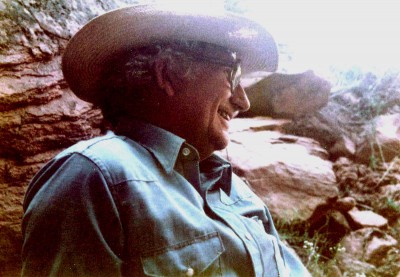 And memories linger too of my trips down Salt Creek until the Park Service introduced desert-bighorn sheep in that area. I chose to cease operations there to give the sheep a chance to get established.
And memories linger too of my trips down Salt Creek until the Park Service introduced desert-bighorn sheep in that area. I chose to cease operations there to give the sheep a chance to get established.
Many of us were concerned about the environment of Arches, we showed up at a public hearing held in Dec 1967 at which the Park Service proposed the establishment of designated wilderness in Arches that would comprise 12, 742 acres. Most of us agreed that the Park Service was on the right track. I remember speaking at the activist Earth First! Rendezvous in Arches –– presenting Abbey’s scribbled fighting words along with my own from the tailgate of Ken Sanders’’ old battered up junky truck.
Those were the days that many of us sprawled about on the sands and slick rock while watching outdoor musical concerts. Especially do I remember Abbey’s and my impulsive visit with ranger friend Jim Stiles –– at our banging on his trailer door late one night and lingering for a couple or so hours over beer, chatting about the whatever. Then on leaving Stiles’ ugly trailer of sorts and his unexpected warm reception (Editor’s note: “Stiles’ UNEXPECTED warm reception”???) of us, Ed and I chugged down to one of our favorite sites and we camped on the slickrock under the night stars. A sudden rain squall drenched us –– causing me to drag my bedroll under his truck where I resided till dawn. And in the morning we took an energizing and unforgettable jaunt out over the rising and falling slick rock to view the breaking sun and the beautiful canyons.
And on Abbey’s tragic death, many of his cherished friends met at that same place to hold a memorable memorial to him – at which a number of us expressed ourselves, the best we could, in remembering him and his great contributions to the canyons and the environment. Then at the ending of that great era, I regretfully pulled my guiding operations out of Arches. It just wasn’t the same no more.
======
Now today, I worry about the future of Arches. I fear that it may have already become a “sacrifice park.” I suppose it was inevitable –– because of the affinity between money and politics. Arches today is being deluged with more traffic and always more people. The extent to which Arches National Park should be accessible to the public is central to the concerns of many of us. I understand the laws and the declared purposes for establishing national parks. Providing public access to Arches National Park is one of its central purposes. But so is the protection of the Park’s unique natural resources.
In 1916 Congress officially established an agency, the National Park Service, to manage the nation’s parks. The Congress gave the Park Service its strong directive:
“……shall promote and regulate the use of the Federal areas known as national parks, monuments…… which purpose is to conserve the scenery and the natural and historic objects and the wild life therein and to provide for the enjoyment of the same in such manner and by such means as will leave them unimpaired for the enjoyment of future generations.”
Clear isn’t it? Years ago, local citizens spearheaded the drive in support of National Monument status. One of them was Loren L. (Bish) Taylor, editor and manager of Moab’s The Times Independent and one of the most enthusiastic and successful boosters. Soon after, President Herbert Hoover issued his executive proclamation of April 12, 1929, creating the National Monument. On this subject, Taylor wrote in an editorial, that the touring public “……will soon become known the world over for the unique scenic wonders it contains. The Creation of the new national monument will prove a big boost in exploiting the scenic resources of southeastern Utah.” So right Bish was. It did indeed exploit.
Now the Park Service must get its priorities in order. It’s cleanly a matter of development vs. protection. It’s obvious on which side the Park Service has recently taken. Observe the increased new roads, parking areas, new-hardened trails, and a new tourist center. “Build it and they will come.” Many people feel that access should be open for all people despite their recreational preferences or physical abilities. To them, restrictions that limit equal access clash with the mandate creating the parks. All Americans – tourists, the handicapped, the elderly, rock climbers, hikers and bikers – should be welcome in our parks, they reason, even if it requires new roads, trails, and other developments.
Look at the pressures. I was sitting on the Grand County Travel Council board in past years, and certain interests from Thompson Springs brought to the board their proposal for the federal construction of a paved highway that would access Arches from Interstate 70. They reasoned that the construction of such a road would serve the needs of the traveling tourist as well as further aid the local economy. Horrors be to that idea.
However in spite of the fierce opposition, there are many persons that would restrict this uncontrolled access. They cite crowding on trails and traffic jams and the destruction of native vegetation. Some of them advocate limits on the number of visitors in the park during peak periods. Others would support a reservation system or tourist quotas. Some would confine public access to designated portions of the park to give the park a chance to cleanse and restore itself. –– believing that the park has a natural healing ability. Arches ought to protect those areas that still remain wild and beautiful. Many travelers come, but many of them don’t know just how to visit it. Ed Abbey has the answer in his advice to visitors in his book, Desert Solitaire:
“In the first place you can’t see anything from a car; you’ve got to get out of the goddamned contraption and walk, better yet crawl, on hands and knees, over the sandstone and through the thornbush and cactus. When traces of blood begin to mark your trail you’ll see something, maybe. Probably not.” And then he added:
“In the second place most of what I write about in this book is already gone or going under fast. This is not a travel guide but an elegy. A memorial. You’re holding a tombstone in your hands.”
Let us not make Arches itself a memorial, a tombstone, a sacrifice area. Areas of greater ecological vulnerability must be protected with zoning that is more restrictive. This is a part of the plan of yesteryear.
For a starter, we need to remove the campground.
There may be a few areas that would withstand present levels of human use, but there are also other areas that could be easily spoiled. Targeted protective and restoration management is critically needed.
I’m aware that park officials recognize that visitors have a wide range of needs, desires, and expectations. How they are to accommodate such diversity is the difficulty.
However, we just can’t meet all interests. We need to define the desires of the tourists and the desired resource conditions –– to know what facilities would or would not be allowed in order to protect this natural environment. We need to look closely at the consequences of past actions and begin a restoration process.
Under present growth patterns, I feel that it is inevitable that many more people in the future will visit Arches. Nonetheless, the park officials must in the future, at some point, limit the number of people who visit it.
Limiting the number during the summer months would help solve over-crowding. Especially, visitation needs to be controlled during peak periods and holidays. To do this it may mean restricting personal vehicles and then instituting a public bus transport system.
Park officials must concede that the park cannot accommodate an endless number of visitors. It cannot even comfortably find room for the current population without constructing new roads, parking areas and other facilities.
Some areas need to be treated as wilderness areas, and in those areas no roads and few trails should be permitted. We need to go back and dust off past wilderness studies. In these reports, the Park Service said that the sandstone formations “provide numerous opportunities for solitude and removal from the activities of man. Each proposed wilderness can be effectively managed for the perpetuation of these values and the preservation of the scientific and outstanding geologic features found therein.”
The Coalition of Concerned National Park Service Retirees has just issued a report, A Call to Action: Saving our National Park System that calls for an extensive overhaul of many national parks over the next 12 years. The group feels that actions are being undertaken that diminishes the values and purposes for which the national parks are established. I agree.
And the Red Rock Wilderness Group is calling for the protection of wilderness values in federally administered areas outside the park –– which the exploitation of such areas do in fact have a damaging effect on the park’s very integrity.
We must now see that the National Park Service does indeed “……conserve [the resources] and provide for the enjoyment of the same in such manner and by such means as will leave them unimpaired for the enjoyment of future generations.”
Ken Sleight still lives at Pack Creek Ranch near Moab.
Click Here to Read the Previous Installments of Ken Sleight Remembers…
To read the PDF version of this article, click here.
To comment, scroll to the bottom of the page.
Don’t forget the Zephyr ads! All links are hot!

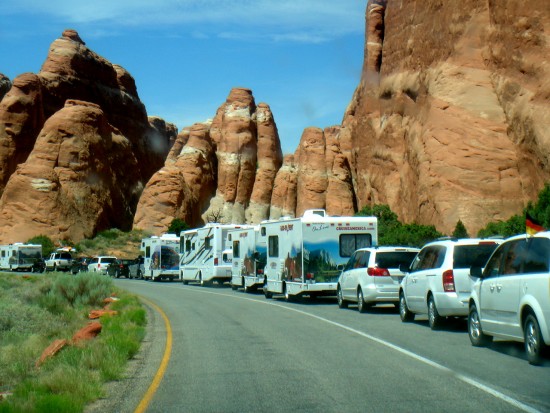

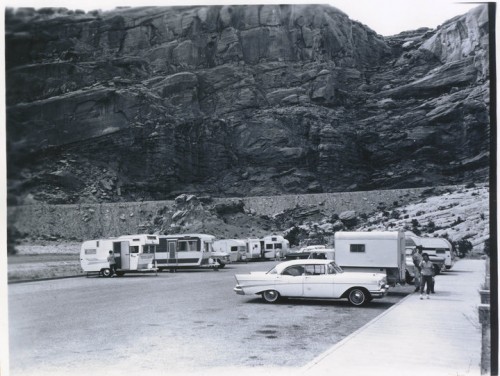
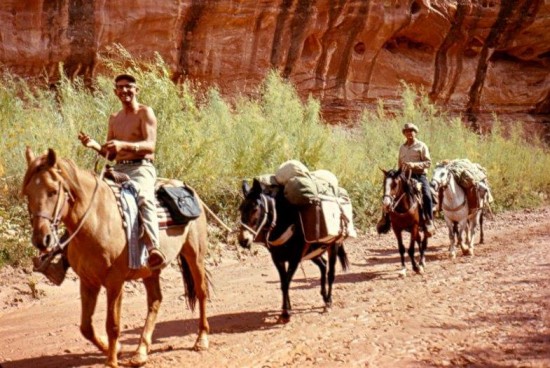
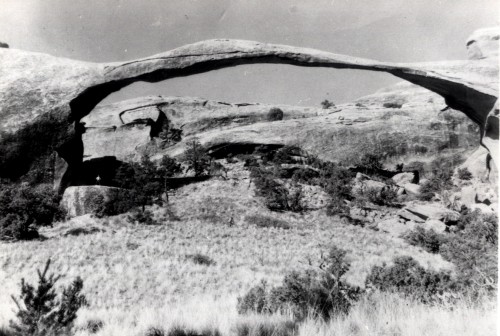
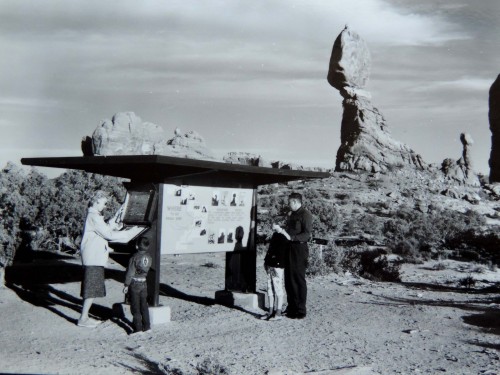
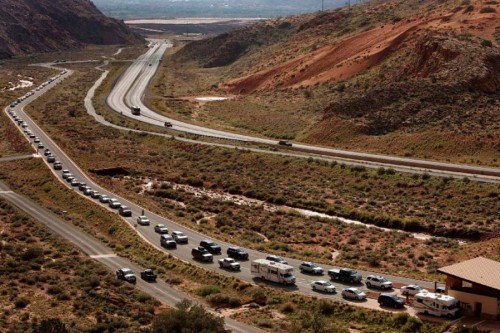
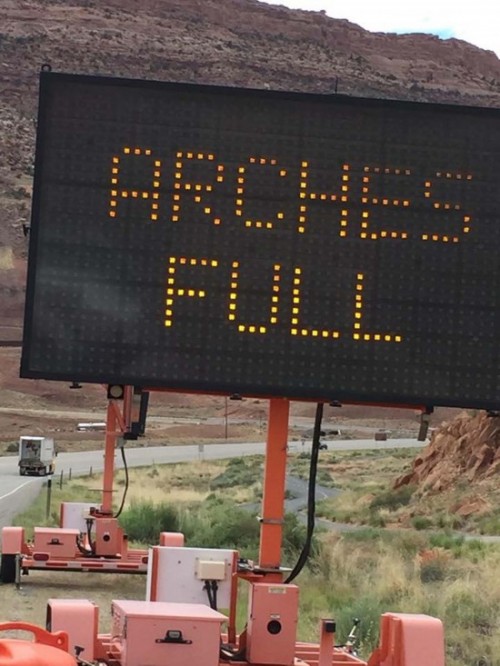
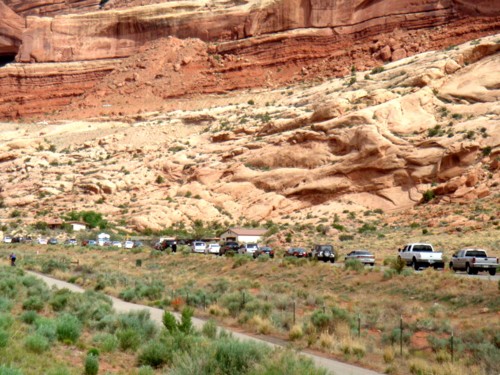
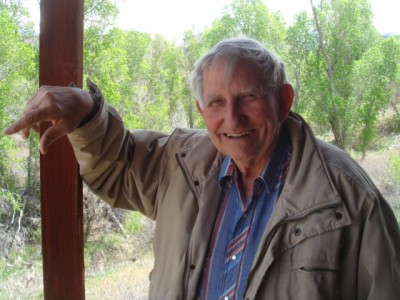
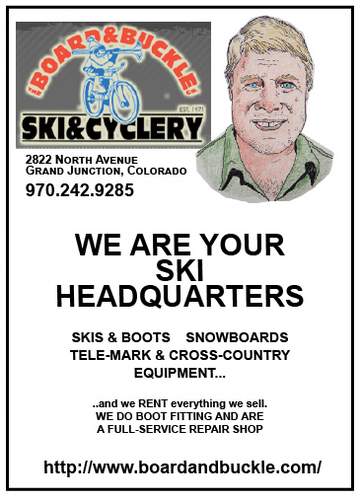





I was born about 60 years ago. At that time, there were roughly 3 BILLION people on the planet. Today, we have some where around 7.4 BILLION people. It is said that there will be over 10 BILLION before the numbers start to decrease. Perhaps as soon as 2075. There are forces at work that will bring another 4 million people to the state of Arizona in the next 30 years. WOW! It will only get worse. My point…..stop making human babies!
Further, 1 BILLION automobiles will soon cover the planet with roads, parking lots, mines, gas stations, garages, junk yards, manufacturing plants, etc. It will only get worse. Stop making cars now! I gave up mine years ago. Recycle yours today… that means you Brad Donaldson.